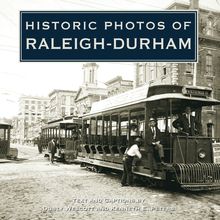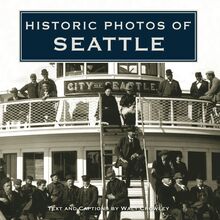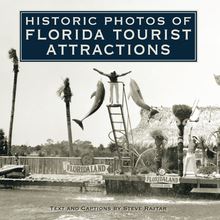Historic Photos of Dallas , livre ebook
182
pages
English
Ebooks
2006
Vous pourrez modifier la taille du texte de cet ouvrage
Obtenez un accès à la bibliothèque pour le consulter en ligne En savoir plus
Découvre YouScribe en t'inscrivant gratuitement
Découvre YouScribe en t'inscrivant gratuitement
182
pages
English
Ebooks
2006
Vous pourrez modifier la taille du texte de cet ouvrage
Obtenez un accès à la bibliothèque pour le consulter en ligne En savoir plus
Publié par
Date de parution
01 novembre 2006
Nombre de lectures
0
EAN13
9781618586193
Langue
English
Poids de l'ouvrage
26 Mo
Publié par
Date de parution
01 novembre 2006
Nombre de lectures
0
EAN13
9781618586193
Langue
English
Poids de l'ouvrage
26 Mo
HISTORIC PHOTOS OF
DALLAS
T EXT AND C APTIONS BY M ICHAEL V. H AZEL
By the 1930s, the downtown Dallas skyline had achieved an impressively urban look, but it was still surrounded by almost rural scenes.
HISTORIC PHOTOS OF
DALLAS
Turner Publishing Company
200 4th Avenue North Suite 950
Nashville, Tennessee 37219
(615) 255-2665
www.turnerpublishing.com
Historic Photos of Dallas
Copyright 2006 Turner Publishing Company
All rights reserved.
This book or any part thereof may not be reproduced or transmitted in any form or by any means, electronic or mechanical, including photocopying, recording, or by any information storage and retrieval system, without permission in writing from the publisher.
Library of Congress Control Number: 2006934336
ISBN-10: 1-59652-290-9
ISBN-13: 978-1-59652-290-9
Printed in China
09 10 11 12 13 14 15 16-0 9 8 7 6 5 4 3
C ONTENTS
A CKNOWLEDGMENTS
P REFACE
F ROM O UTPOST TO T URN-OF-THE-CENTURY B OOMTOWN (1850 S -1899)
S TIRRINGS OF A N EW C ENTURY (1900-1929)
F ROM THE G REAT D EPRESSION TO P OSTWAR M ETROPOLIS (1930-1949)
T HE M ODERN A GE (1950-1969)
N OTES ON THE P HOTOGRAPHS
New skyscrapers and the iconic Reunion Tower (left) created a vibrant image for Dallas in the late twentieth century, while the Houston Street Viaduct, which opened in 1911, remained a visible link with the past.
A CKNOWLEDGMENTS
This volume, Historic Photos of Dallas , is the result of the cooperation and efforts of many individuals, organizations, institutions, and corporations. It is with great thanks that we acknowledge the valuable contribution of the following for their generous support:
Dallas Historical Society
Dallas Public Library
Library of Congress
We would also like to thank the following individuals for their valuable contributions and assistance in making this work possible:
Beth Andresen, History Archives Division, Dallas Public Library
Michael Duty, Dallas Historical Society
Michael V. Hazel, Dallas Historical Society, Writer and Editor
Jane Soutner, History Archives Division, Dallas Public Library
P REFACE
Dallas has thousands of historic photographs that reside in archives, both locally and nationally. This book began with the observation that, while those photographs are of great interest to many, they are not easily accessible. During a time when Dallas is looking ahead and evaluating its future course, many people are asking, How do we treat the past? These decisions affect every aspect of the city-architecture, public spaces, commerce, infrastructure-and these, in turn, affect the way that people live their lives. This book seeks to provide easy access to a valuable, objective look into the history of Dallas.
The power of photographs is that they are less subjective than words in their treatment of history. Although the photographer can make decisions regarding subject matter and how to capture and present it, photographs do not provide the breadth of interpretation that text does. For this reason, they offer an original, untainted perspective that allows the viewer to interpret and observe.
This project represents countless hours of review and research. The researchers and author have reviewed thousands of photographs in numerous archives. We greatly appreciate the generous assistance of the archivists listed in the acknowledgments of this work, without whom this project could not have been completed.
The goal in publishing this work is to provide broader access to this set of extraordinary photographs that seek to inspire, provide perspective, and evoke insight that might assist people who are responsible for determining Dallas s future. In addition, the book seeks to preserve the past with adequate respect and reverence.
With the exception of touching up imperfections that have accrued with the passage of time and cropping where necessary, no other changes have been made. The focus and clarity of many images is limited to the technology and the ability of the photographer at the time they were taken.
The work is divided into eras. Beginning with some of the earliest known photographs of Dallas, the first section records images through the end of the nineteenth century. The second section spans the beginning of the twentieth century to the close of the 1920s. Section Three moves from the Great Depression to World War II and the early postwar years. The last section covers the postwar era through the 1960s.
In each of these sections we have made an effort to capture various aspects of life through our selection of photographs. People, commerce, transportation, infrastructure, religious institutions, and educational institutions have been included to provide a broad perspective.
We encourage readers to reflect as they go walking in Dallas, strolling through the city, its parks, and neighborhoods. It is the publisher s hope that in utilizing this work, longtime residents will learn something new and that new residents will gain a perspective on where Dallas has been, so that each can contribute to its future.
-Todd Bottorff, Publisher
The arrival of the H. A. Harvey, Jr ., in 1893 was cause for much rejoicing, but the long-held dream of navigating the Trinity River proved elusive. The river was too obstructed with debris, and its water level was too variable, to make boat traffic practical.
F ROM O UTPOST TO T URN-OF-THE-CENTURY B OOMTOWN
(1850 S -1899)
Dallas began in the 1840s as an outpost at a crossing of the Trinity River. Its founder was John Neely Bryan, a real estate speculator who laid out lots but had trouble finding buyers and eventually sold out to Alex and Sarah Cockrell. More enterprising than Bryan, they built a bridge across the Trinity, set up a sawmill to provide milled lumber for construction, and built a hotel. By the 1850s, several hundred people lived in town.
Dallas got a boost over neighboring villages in 1850 when it was selected as the county seat. Since anybody with legal business had to come to the courthouse, the surrounding livery stables, hotels, stores, and saloons all benefited. But growth was hampered by the lack of good transportation, the roads being primitive and the river unnavigable. Civic leaders pinned their hopes on the railroads and resorted to chicanery and bribery to get them to run lines through Dallas, which they finally did in 1872 and 1873.
With rail outlets, Dallas became a boomtown, attracting immigrants, merchants, and manufactured goods. Area farmers turned to cotton, which could now be economically shipped out by rail, and by the end of the century Dallas was the largest inland cotton market in the world. Gradually, the town acquired the amenities of late-ninetenth-century urban life-gas and electric lights, telephones, streetcars, and protection of police and fire departments. Churches and schools proliferated.
In 1890, for the first and only time in its history, Dallas was the largest city in Texas, with a population of 38,000. It hosted the annual state fair, as well as traveling theatrical troupes and religious evangelists. By the end of the century, it was the largest publishing center south of St. Louis and headquarters for fire and life insurance in the Southwest. It even had suburbs, several of which would eventually be absorbed into the city.
One of the earliest photographs of Dallas is this stereoscope image of a two-story block facing a dirt street.
Parades were a popular form of entertainment in the nineteenth century, but they also helped promote local businesses. This Mardi Gras parade was staged in 1876.
Dallas s first practicing attorney, John C. McCoy, built this cottage in 1852 at the corner of Commerce and Lamar. In this 1879 family photo, McCoy is the bearded man standing on the porch.
Colonel James B. Simpson, an early Dallas attorney, built this house on the southwest corner of Main and S. Harwood streets in 1878. Colonel John C. McCoy, another early attorney, purchased the residence in 1885. It remained in his family until it was torn down in 1906.
The wagon yard a block south of the courthouse was the scene of monthly trade days. From the 1880s into the twentieth century farmers brought livestock here.
The arrival of the railroads to Dallas in 1872 and 1873 was the key event in the development of the city, turning it almost overnight into a boomtown. Rail transportation gave farmers an outlet for their products, enabled merchants to import manufactured goods, and allowed the population to soar.
Alex and Philip Sanger brought their family s mercantile business to Dallas with the railroad in 1872, opening what soon became the city s leading department store. Sanger Brothers introduced escalators, fixed prices, and women sales clerks to Dallas.
Operated by one of the many German immigrants who flocked to Dallas in the 1870s and 1880s, Mayer s Garden was a popular watering hole, featuring a garden with a small zoo and the city s first outdoor electric lights.
Beginning with saddlery and leather goods in the 1870s, Padgitt Brothers soon branched out into the manufacture and sale of carriages. Dallas had been a center for carriage building since the 1850s.
Dallas streets were still unpaved in the 1880s, as this view taken from the courthouse square looking east on Commerce indicates.
The Dallas Opera House opened in 1883 and hosted such diverse entertainers as actors James O Neill and Eddie Foy, and bandleader John Philip Sousa before it burned to the ground in 1901.
Dallas s most important nineteenth-century architect, James Flanders, designed both the Gaston Building (left) and the Gould Building (decorated for its opening in 1885).
Dallas County s fifth courthouse was designed by the city s leading architect, James Flanders, and was widely touted as being fireproof-until it burned in 1890.
This U.S. Post Office building was constructed in stages between 1884 and 1904 on Ervay Street between Commerce an














